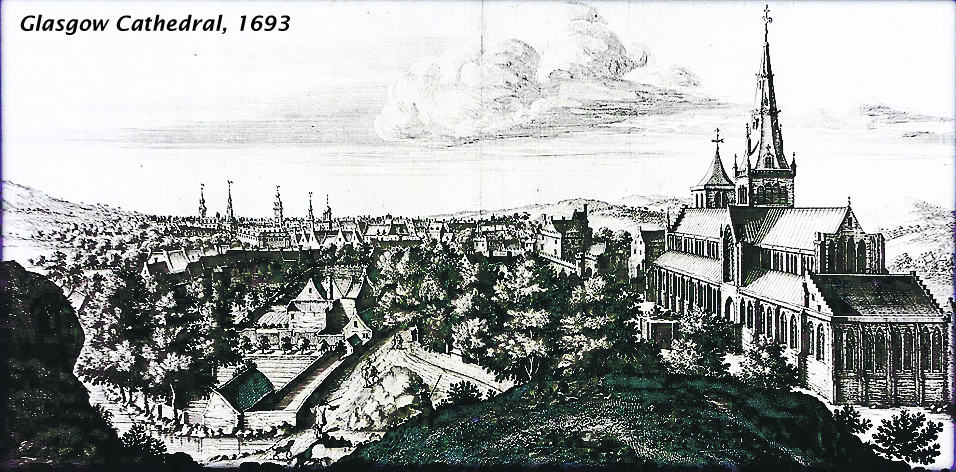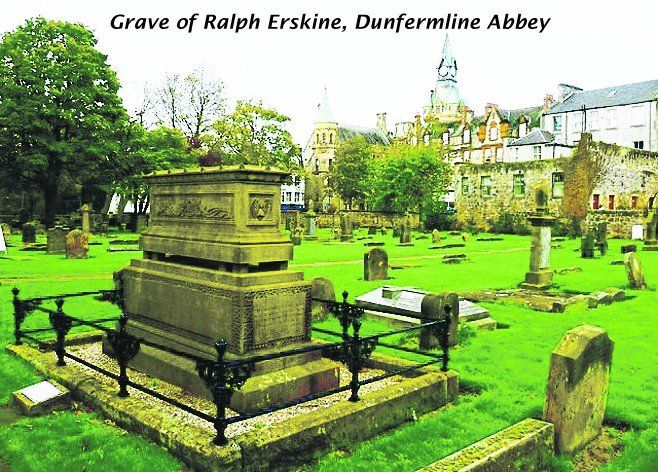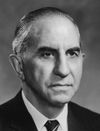Many might think of George Whitefield’s connections with Scotland in terms of his part in the Cambuslang Revival (1742) and sad dispute with Ralph and Ebenezer Erskine of the Associate Presbytery.
It is not so well known that Whitefield visited Scotland on no less than 14 occasions between 1741 and 1768. He preached to thousands on each occasion and during that period never waned in his popularity with the Scottish people.
Books
His earliest connection with Scotland began through the influence of the writings of Scottish divines. The major human factor in his conversion was the reading of the book, The life of God in the soul of man, by Henry Scougal, Aberdeen.
‘I must bear testimony to my old friend, Mr Charles Wesley; he put a book into my hands called The life of God in the soul of man, whereby God showed me, that I must be born again or damned’. Whitefield testified, ‘I never knew what true religion was till God sent me this excellent treatise’. This brought Whitefield to preach the doctrine of the new birth, which was the seed out of which the English side of the eighteenth century revival first sprouted.
Although Whitefield proclaimed the new birth and free grace, it was some years before he came to a full understanding of the Calvinistic faith. Again there was a Scottish connection. It is known from his Journals that he had been reading the sermons of Ralph and Ebenezer Erskine. Whitefield wrote to Ralph: ‘I bless the Lord, from my soul, for raising you and several other burning and shining lights to appear for Him in the midnight of the church.
‘My heart has been much warmed by reading some of your sermons, especially that preached before the Associate Presbytery. I like Boston’s Fourfold state of man exceedingly. Under God it has been of much service to my soul’.
It was during a voyage to America in 1739 that Whitefield came to re-examine his doctrinal position. He could say later: ‘I embrace the Calvinistic scheme, not because Calvin but because Jesus Christ has taught it to me’.
It was these new found convictions that opened to Whitefield a wider field of usefulness, first in America and then in Scotland. He was instrumental in linking together the Awakening in England with that in America.
The circulation of accounts of revival in America stimulated interest in the revival in Cambuslang. Without his new found Calvinistic beliefs, Whitefield could not have had the sympathy and co-operation of the Presbyterians and Independents of America. It was this also that prepared for his part in the revivals in Scotland and his subsequent popularity.
Erskines
In 1733, there was a secession from the Church of Scotland, led by, among others, the brothers Ebenezer and Ralph Erskine. They formed the Associate Presbytery. Their concern for evangelism and open-air preaching led them to invite Whitefield to Scotland, hoping he would strengthen their cause.
Whitefield arrived in Edinburgh on 29 July 1741 and went to Dunfermline to meet Ralph. Next day, Ralph wrote: ‘He preached in my meeting house this afternoon. The Lord is evidently with him’.

Whitefield then went to Edinburgh. ‘On Sunday evening (last) I preached in a field near the Orphan House to upwards of fifteen thousand people; and on Monday, Friday and Saturday evenings to near as many … everywhere the auditoriums were large and very attentive. Great power accompanied the Word. Many have been brought under conviction’.
The brethren of the Associate Presbytery wanted Whitefield to disown episcopacy and accept that their Presbyterian form of church government was agreeable to the Word of God.
Whitefield reported: ‘The Associate Presbytery are so confined that they will not so much as hear me preach, unless I will join with them. Mr Ralph Erskine, indeed, did hear me and went with me into the pulpit of the Canongate Church. The people were ready to shout for joy; but I believe it gave offence to his associates’.
Whitefield continued: ‘I asked why only for them? Mr Ralph Erskine said, “They were the Lord’s people”. I asked them then whether there were no other Lord’s people but themselves? And, supposing all others were the devil’s people, they certainly had more need to be preached to; and therefore I was more and more determined to go out into the highways and hedges’.
Cambuslang
During his 1741 tour, Whitefield was in Glasgow in early September. He preached ten times in five days, chiefly in the High Church (cathedral) yard. Some attended from Cambuslang and had impressions made on them.
Their reports confirmed William M’Culloch in the programme he was already carrying out in his church: ‘preaching much on regeneration’. Things were beginning to stir there and at services it was usual for him to give accounts of revivals in America.
Among the first to receive news of an outbreak of revival in Cambuslang was Whitefield himself. On 4 March 1742 he noted: ‘In Scotland the awakening is greater than greater’. On 22 March he replied to a letter from M’Culloch, ‘I rejoice to hear of the great work begun in Scotland, and doubt not of its continuance’.
M’Culloch wrote to him: ‘Oh, Mr Whitefield, why are you so long a’coming to poor Scotland again? How many say, “When is he coming?” For the Lord’s sake, do not lay aside thoughts of coming, whatever work you may have in England’.
He arrived at Cambuslang on Tuesday 6 July, at midday. On that same day he preached at 2 o’clock in the afternoon, at 6 o’clock in the evening and at 9 o’clock at night. He recorded: ‘Such a commotion surely never was heard of, especially at eleven at night. It far outdid all that I ever saw in America’.
He went on: ‘For about an hour and a half there were scenes of uncontrollable distress, like a field of battle. Many were being carried into the manse like wounded soldiers’.
Huge crowds
Whitefield described the awakening as unspeakable and akin to an experience at Fogg’s Manor in Pennsylvania: ‘I never was enabled to preach so before’.

A Communion weekend was arranged. Writing on 14 July, M’Culloch reckoned that the total number of communicants, judging by the tokens gathered in, ‘was about 1700’. Some people had estimated that the congregation exceeded 30,000, but ‘Mr Whitefield, who is used to such things … made them about 20,000’.
In the same letter, the minister at Cambuslang believed that ‘above 500 souls … have been savingly brought home to God … nor do I include those who have been awakened by means of Mr Whitefield’s sermons in this place [he had preached 17 sermons in Cambuslang], because I cannot pretend to compute them’.
So impressive was the first sacramental occasion that they decided to have another. The crowds that gathered for the second occasion were enormous, greater than ever. ‘None ever saw the like since the Revolution in Scotland, or even anywhere else, at any sacramental occasion; some have called them 50,000; some 40,000; the lowest estimate I hear of … makes them to have been upwards of 30,000’.
It is easier to grasp the significance of this when one considers that the total population of Glasgow in 1740 was estimated to be only 17,034. Of such unforgettable days, Whitefield wrote: ‘Such a Passover has never been heard of’. Whitefield had spent his days among revivals, yet he testified that this was the greatest he had ever witnessed.
Later visits
Although there was to be no repeat of the remarkable events that accompanied Whitefield’s preaching at Cambuslang, his later visits to Scotland were described as refreshing and stimulating.
It was nearly six years after the Cambuslang revival that he made his third visit, in September 1748. There was a lot of ecclesiastical bitterness. The Associate Presbytery had denounced the revival at Cambuslang as of the devil. The strong opposition of the Associate Presbytery to Whitefield continued, as they ‘solemnly pledged to strengthen one another’s hands … to extirpate Popery, Prelacy, Arminianism, Arianism, Tritheism, Sabellianism and George Whitefieldism’.
The Church of Scotland Synod of Perth ‘made an Act against employing him’. Some with a view of lessening the bitterness did not use him. Despite such opposition, Whitefield was as much thronged after as ever by the people.
Whitefield’s love for Scotland and their love for him continued. On his fourth visit in 1750, he could say, ‘I have met and shaken hands with Ralph Erskine. Oh when shall God’s people learn war no more?’ On the same visit he observes: ‘No one can well describe the order, attention and earnestness of the Scotch congregations. They are unwearied in hearing the gospel. I left thousands sorrowful at Glasgow’.
On his journey to England he said, ‘I have taken a very sorrowful leave of Scotland … I shall have reason to bless God from all eternity for this last visit to Scotland’.
His ninth visit in 1757 coincided with the meetings of the General Assembly, when he was warmly received by the Church of Scotland. He preached there morning and evening and attended every one of the sittings.
Burning and shining light
In 1759, on his eleventh visit, he preached 100 times in seven weeks. Writing in 1761 to Dr John Gillie, his first biographer, Whitefield declared: ‘I have thoughts of seeing Scotland … that will be a desirable place to go to heaven from. I love, I love that dear people’.
On his last visit in June 1768 he said, ‘I am here [in Edinburgh] only in danger of being hugged to death’.
In an age when Scotland was dominated by cold Moderatism and religious bigotry Whitefield was a burning and shining light to the nation. As Dr Gillies observed: ‘His preaching had an excellent tendency to destroy bigotry, and to turn men’s attention from smaller matters to the great and substantial things of religion’.
John J. Murray
The author ministered in the Free Church Continuing (FCC) before retiring. He was Moderator of the FCC General Assembly in 2003.




